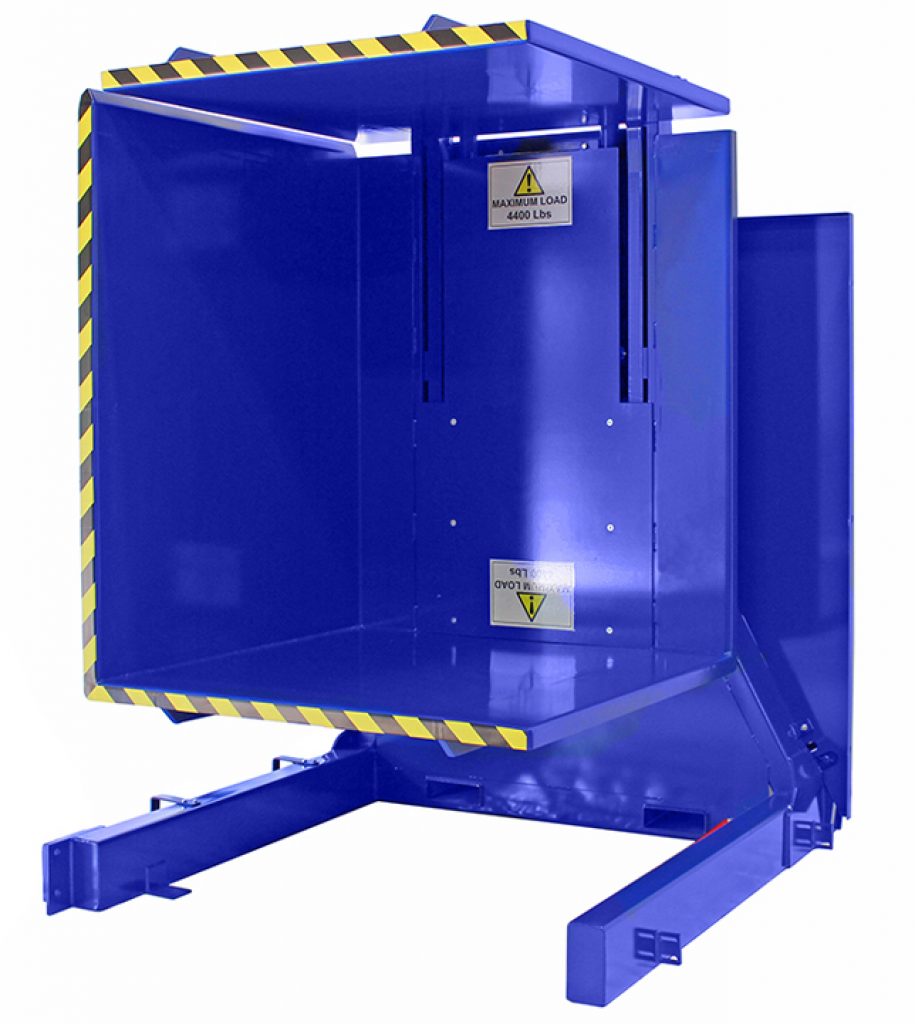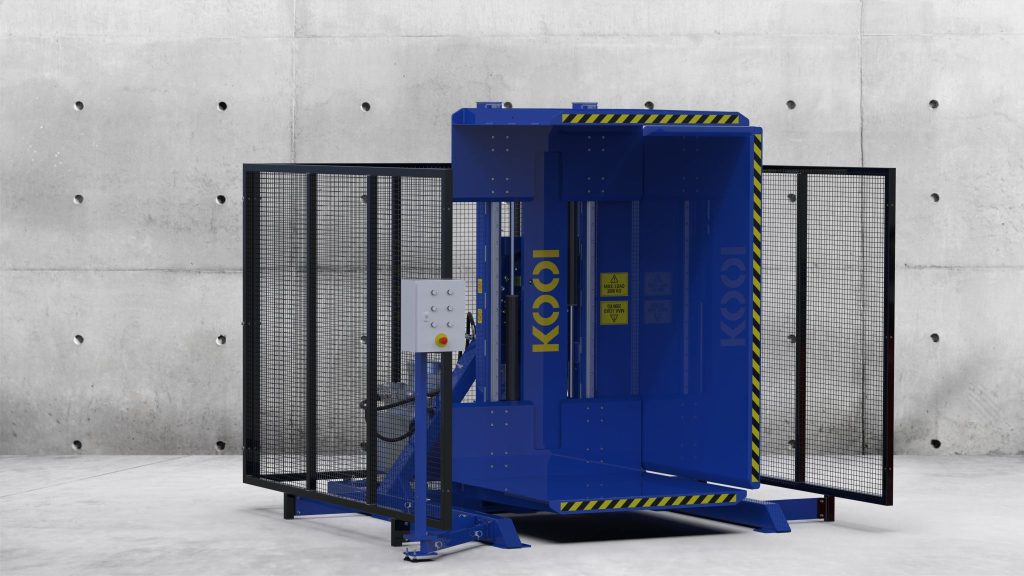# Pallet Inverter Price Guide 2024: Decoding Market Trends, Costs, and Smart Investment Strategies for Efficient Pallet Handling
Navigating the 2024 pallet inverter market requires understanding the key price determinants, from basic models around $10,000 to advanced systems exceeding $50,000, alongside crucial market trends like automation integration and regional growth in Asia-Pacific, ensuring businesses make informed investments in pallet changing and handling solutions that maximize efficiency and ROI.
Pallet inverters are rapidly becoming indispensable assets across industries, especially where the efficient and safe handling of goods is paramount. As businesses globally strive for streamlined logistics and reduced operational costs, understanding the 2024 pallet inverter market – its pricing, evolving trends, and strategic investment considerations – is no longer optional, but critical for maintaining a competitive edge. This comprehensive guide delves into the multifaceted world of pallet inverter costs, dissects prevailing market trends, and equips you with the knowledge to make informed decisions for your pallet handling needs, ensuring optimal efficiency and return on investment.

Decoding Pallet Inverter Costs: A 2024 Price Spectrum
The financial outlay for a pallet inverter in 2024 is not a one-size-fits-all equation. Costs fluctuate widely, primarily influenced by the sophistication of the design, the embedded technology, and the operational capacity of the equipment. Generally, businesses can expect the price range to span from approximately $10,000 for entry-level models to upwards of $50,000 for cutting-edge, automated systems.
At the more accessible end of the spectrum, basic pallet inverters present a cost-effective solution, albeit with certain trade-offs. These models typically feature manual or semi-automated operations, and their weight capacity is often limited, making them suitable for smaller-scale operations such as compact ware
Conversely, premium pallet inverters represent the pinnacle of pallet handling technology. These high-end systems are characterized by advanced automation, significantly higher weight capacities, and sophisticated safety mechanisms. They often accommodate a diverse array of pallet sizes and types, enhancing versatility and operational flexibility. While the substantial upfront investment reflects these advanced features, they offer unparalleled solutions for large-scale enterprises seeking to optimize efficiency, bolster safety protocols, and maximize throughput. Furthermore, these advanced systems are increasingly designed for seamless integration with existing Warehouse Management Systems (WMS), unlocking higher levels of automation that translate to reduced labor expenditure and amplified productivity.
Beyond the initial purchase price, a holistic cost assessment must encompass supplementary expenses such as installation, routine maintenance, and potential downtime. Installation, while generally straightforward, can incur additional costs depending on the unique infrastructural demands of the facility. Similarly, regular maintenance is crucial for ensuring peak performance and longevity, adding to the overall cost of ownership. Businesses must meticulously evaluate their specific operational needs and scale to pinpoint the most fiscally sound option. While the initial investment in a pallet inverter may appear substantial, the augmented efficiency, diminished manual handling errors, and consequent labor savings frequently deliver a compelling Return on Investment (ROI) that vindicates the expenditure. For businesses seeking financial flexibility, leasing options and tailored financing plans are readily available, enabling them to distribute the cost over time and align payments with operational budgets.
2024 Market Trends: Navigating Automation and Global Growth
The global loading machinery market, of which pallet inverters are a crucial component, is experien
- Sustainability Focus: As environmental consciousness intensifies across industries, the demand for eco-friendly and energy-efficient pallet inverter models is on the rise. Manufacturers are responding by developing systems that minimize energy consumption and utilize sustainable materials, aligning with global sustainability initiatives and appealing to environmentally conscious businesses.
- Emerging Markets in Asia-Pacific: The Asia-Pacific region is emerging as a significant growth engine for the pallet inverter market. Rapid industrialization, urbanization, and the explosive growth of the manufacturing and retail sectors in countries like China and India are creating substantial demand for efficient material handling solutions, positioning Asia-Pacific as a key market for pallet inverter manufacturers.
Types of Pallet Inverters: Tailoring Solutions to Operational Needs
The versatility of pallet inverters is evident in the variety of types available, each designed to address specific operational requirements. Understanding these types is crucial for selecting the optimal solution for your business. Key types include:
- Fork Lift Loading Inverters: Designed for easy loading and unloading using standard forklifts, these inverters offer seamless integration into existing warehouse operations, enhancing efficiency without requiring specialized equipment.
- Ramp Loading Inverters: Featuring a ramp for ground-level loading, these models are ideal for operations where forklifts are not readily available or for handling goods directly at ground level, providing operational flexibility and ease of use.

- Ground Level Loading Inverters: These inverters allow for loading directly at ground level without the need for ramps, simplifying the loading process and enhancing safety, especially in busy warehouse environments.
- Recline Rotate Inverters: Offering precise rotation capabilities, these inverters are particularly useful for applications requiring specific load orientations, such as pallet exchange or inspection, providing controlled and accurate handling.
Applications Across Industries: Enhancing Efficiency and Safety
Pallet inverters are indispensable across a multitude of industries, revolutionizing material handling processes and contributing to enhanced efficiency and safety. Key application sectors include:
- Food and Beverage: In the food and beverage industry, hygiene and product integrity are paramount. Pallet inverters facilitate seamless transfer from less hygienic shipping pallets to clean, in-house pallets, minimizing contamination risks and upholding stringent hygiene standards.
- Pharmaceuticals: Similar to the food and beverage sector, the pharmaceutical industry demands impeccable cleanliness and product safety. Pallet inverters are crucial for maintaining sanitary conditions when handling pharmaceutical goods, ensuring product integrity and regulatory compliance.

- Chemicals: The chemical industry often deals with hazardous materials that require careful handling. Pallet inverters enable the safe and efficient transfer of chemical products, reducing the risk of spills and exposure, and enhancing workplace safety.
- Manufacturing & Warehousing: Across general manufacturing and warehousing, pallet inverters are essential for optimizing space utilization, streamlining workflows, and reducing product damage during handling. They facilitate quick pallet changes, enabling efficient inventory management and order fulfillment.
Making the Smart Investment: Key Considerations for 2024
Selecting the right pallet inverter in 2024 demands a strategic approach. Beyond the price tag, businesses must consider a holistic range of factors to ensure the chosen solution aligns with their specific operational needs and delivers long-term value. Key considerations include:
- Operational Needs Analysis: A thorough assessment of your specific pallet handling requirements is crucial. Factors to consider include the volume of pallets handled daily, the types and weights of loads, space constraints within the facility, and integration needs with existing systems.
- Automation Level: Decide the level of automation required. For high-throughput environments, automated systems are likely to offer better long-term ROI despite higher initial costs. For smaller operations, manual or semi-automated models might suffice.

![8 Critical Factors When Choosing a Wire Coil Wrapping Machine [2025 Buyer’s Guide] 8 Critical Factors When Choosing a Wire Coil Wrapping Machine [2025 Buyer’s Guide]](https://i0.wp.com/www.fhopepack.com/blog/wp-content/uploads/2023/01/Master-coil-stretch-wrapper-zt.webp?w=1024&resize=1024,1024&ssl=1)


